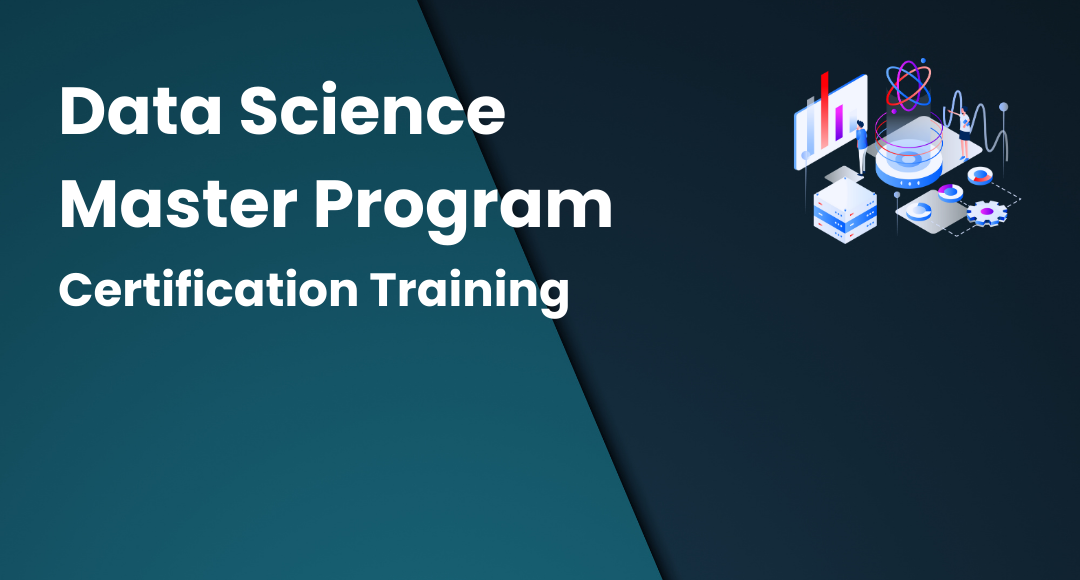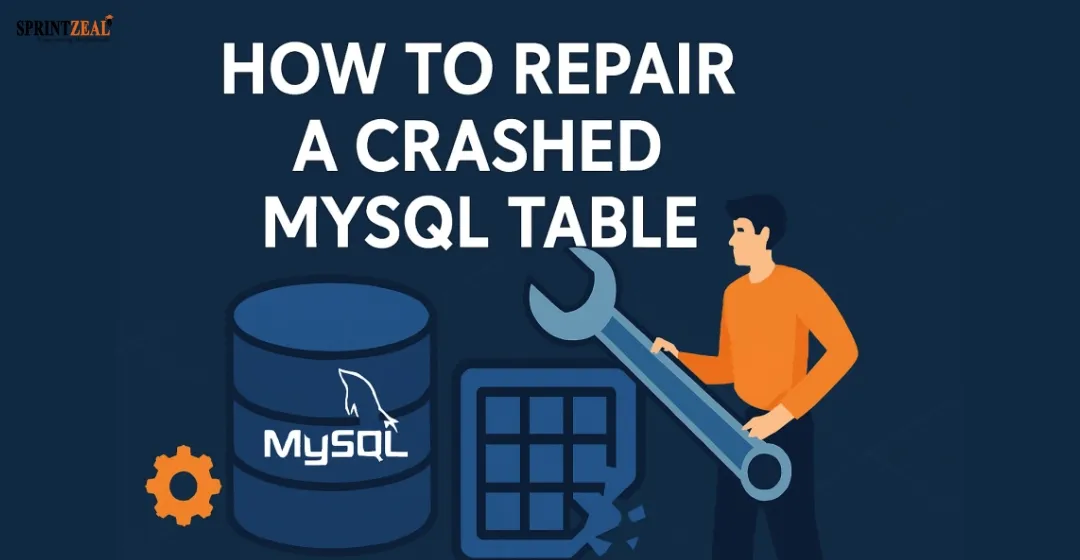Top DBMS Interview Questions and Answers
-
 By Niharika Chaurasia
By Niharika Chaurasia - Published on Feb 27 2024

Table of Contents
Introduction
I believe that you are already aware of the fact that data is everywhere and how important it is to analyze big data to get the required results. A database management system is the pillar of data analysis, which requires the ability to organize, evaluate, review, and make useful information out of a huge amount of data.
To begin a career in data analytics or as a database administrator, here is the most frequently asked DBMS interview question that will help you excel in your next job interview.
DBMS interview preparation
First things first, the main focus for excelling in any interview is to have a thorough knowledge of and command over the subject.
A complete understanding of DBMS, types, DBMS components, and SQL will help you clear your next DBMS interview.
The article consists of two sections, the first section has DBMS basic interview questions and answers, and the other section has DBMS advanced interview questions and answers.
Let’s start with the basic DBMS interview questions and answers.
DBMS Interview Questions and Answers-Basic
1.What is DBMS?
DBMS stands for Database Management System, which is a software application that interacts with the database, applications, and users to store and analyze the required data by taking appropriate security actions.
The software consists of a set of programs that manipulate the database. The DBMS receives the request from an application for particular data, and it instructs the OS to supply accurate data to the users.
DBMS allows users to create databases based on their specific requirements. A DBMS in large systems helps other third-party software and users store and retrieve data.
2.Explain the term "database."
A database is defined as an organized collection of knowledge or information in such a way that it can be accessed and managed easily.
The data can be organized into columns, tables, and rows and indexed to make it easier to search for relevant information.
There are a lot of databases available such as MySQL, Sybase, Oracle, MongoDB, Informix, PostgreSQL, SQL Server, etc.
3.What benefits do DBMS provide over traditional file-based systems?
The following are the advantages of DBMS over traditional file-based systems:
- Multiple user interfaces
- Data redundancy can be controlled
- Provides backup and data recovery
- No unauthorized access to data
- Easy accessibility and processing of data
4.Explain the different types of DBMS architecture.
There are three types of DBMS architecture:
-Single-tier architecture: The data is readily available on the user's machine.
-Two-tier architecture: The DBMS software is present on the user machine, and the database is present on the server machine.
-Three-tier architecture: A layer is present between the user and server machine, and there is no direct communication between them.
A user DBMS application on the user machine interacts with a server DBMS application on the server machine.
5.What are the steps in the DBMS life cycle?
The database life cycle includes the fundamental processes of developing a global schema for a logical database, assigning data across a network, and developing regional schemas for DBMSs.
The DBMS life cycle has 5 steps that include:

6.What are the various languages found in a DBMS?
The different languages present in DBMS are:
DDL (Data Definition Language) consists of commands that are used to define the database.
DML (Data Manipulation Language): It consists of commands that are used to manipulate the data present in the database.
DCL (Data Control Language): It consists of commands that deal with the user permissions and controls of the database system.
TCL (Transaction Control Language): It consists of commands that deal with the transactions in the database.
7.What is a checkpoint in DBMS?
A checkpoint in a DBMS is a savepoint that is used to declare a state where all the previous logs are removed from the system.
In the case of a system crash, checkpoints are used for the recovery of data. This avoids the step of a transaction from the very beginning, and checkpoints can provide a snapshot of the last recorded database.
8.What is normalization in DBMS?
The process of minimizing redundancies in a database is known as "normalization". It also helps to overcome insert, delete, and update anomalies.
9.What do you mean by denormalization in DBMS?
The process of adding redundant data to a database is known as demoralization. It is usually performed after normalization to avoid costly joins. It is a common database optimization technique that helps increase the performance of a database.
10.What are indexes? What are the differences between the clustered and non-clustered indexes?
The data structures that are responsible for improving the speed of data recovery operations on a table are known as indexes. They are mainly used for searching algorithms to retrieve data quickly.
The differences between clustered and non-clustered indexes are as follows:

11.What is Data Model?
A data model is a group of tools that are used to describe data, semantics, and constraints. They describe the relationship between the data entities and their attributes. The best example of a data model is
-Network model
-Hierarchical data model
-Entity relationship model
-Relational model
12.What is the difference between an entity and an attribute in the DBMS?
Entity- In a database management system, it refers to a real-world object with existence.
Example: Employee databases have different entities such as employee, designation, department, etc.
Attribute- In a database management system, "entity refers to a characteristic that describes an entity.
Example: The "employee" as an entity can have name, ID, and age as its attributes.
DBMS Interview Questions and Answers- Advance
13.Explain the different normal forms for normalization.
Normalization works through a series of stages called normal forms. The normal forms apply to individual relationships. The relation is said to be in a specific normal form if it fulfills constraints.
The most common normal forms are:
First Normal Form(1NF) - A table is termed in 1NF if it holds only atomic values.
Second Normal Form(2NF) - A table is said to be in 2NF if it is in 1NF and non-prime attributes are not dependent on any candidate key.
Third Normal Form(3NF) - A table is termed in 3NF if it is in 2NF and non-prime attributes are not dependent on any super key.
Boyce & Codd Normal Form(BCNF) - A table is considered as BCNF if it is in 3NF and for every functional dependency A->B, B is the super key of the table.
14.What are a DBMS's ACID properties?
The ACID properties of a DBMS are the basic rules of a DBMS, which must be followed to preserve data integrity.
DBMS has the following ACID properties:

15.What are the different types of keys in a DBMS?
The different types of DBMS keys are:
Primary key- It is an attribute used to uniquely identify each record in a table. A primary key is mandatory for every table.
Super key- It is a set of attributes used to uniquely identify a tuple. The word "super" denotes the superiority of a key.
Candidate key- A candidate key is a subset of a super key set. It is a set of attributes used to uniquely identify a table.
Foreign key- It is a field or a collection of fields used to link one table to a primary key from another table. The table with the foreign key is called the child table, and the table with the primary key is called the referenced or parent table.
16.What do you mean by functional dependency?
Functional dependency or database dependency means controlling the dependence of one attribute on another. It is denoted by X -> Y, which means that Y is functionally dependent on X.
17.What do you mean by proactive, retroactive, and simultaneous updates?
Proactive Update: These updates are applied to the database before it becomes operative in the real-world environment.
Retroactive Update: These are changes made to a database after it has become operational in the real world.
Simultaneous Update: These updates are applied to the database at an equivalent instance of your time because they become effective in a real-world environment.
18.Explain the difference between a DELETE command and TRUNCATE command.
Here is the difference between a DELETE command and a TRUNCATE command, as shown in the table below:

19.Define a relationship in DBMS and its various types.
A "relationship" in a DBMS means an association or link between two or more data entities. There are mainly 3 types of relationships in DBMS:
One-to-one: A single record in one table is related to a single record in another table, and vice versa.
One-to-many/many-to-one: A single record in one table is related to many records in other tables, and vice versa.
Many-to-many: Multiple records in one table are related to multiple records in another table.
The relationship in a DBMS depends on how the user interacts with the database.
20.What is "data abstraction"?
Data abstraction is the process of concealing unwanted information from users. Since a database consists of complex data structures, data abstraction helps users interact easily with the database.
For example, while a user can interact with the system via the GUI, they might not always be aware of how the data is kept in the backend.
21.What are the different levels of data abstraction?
The data abstraction includes three different levels:
Physical level- the lowest level of data abstraction represents the physical level. It represents complex data structures and describes how the data is stored.
Logical level- The middle level of data abstraction shows a logical level. It defines how the data is stored in the database and the relationships between them. It is a conceptual understanding of the data.
View level- The view level represents the highest level of data abstraction. At this level, the users can actually see the data as it is presented by an application interface. The user can only interact with or view the data.
Read more blogs to cover
What is Big Data Analytics? - A Beginner's Guide
The Bottom Line
This article contains basic and advanced-level DBMS interview questions and answers for those who aspire to have careers in data management, data analysis, and data administration. The future of DBMS is very promising; it has endless growth and a wide range of job opportunities.
When applying for a job in the field of data management, a certification definitely makes a difference on your resume.
Enroll in the Data Science Master Program from a reputed and recognized authorized partner like Sprintzeal to accelerate your career.
To get full details about the certifications or any queries related to training, chat with the course expert.
Courses to checkout
Subscribe to our Newsletters
Popular Programs
Trending Posts
Data Visualization - Top Benefits and Tools
Last updated on Mar 27 2024
What is Big Data – Types, Trends and Future Explained
Last updated on Feb 2 2024
What Is a Data Scientist? Salary, Skills, and How to Become One
Last updated on Dec 11 2025
How to repair a crashed MySQL table?
Last updated on Aug 13 2025
Data Science Interview Questions and Answers 2026 (UPDATED)
Last updated on Feb 16 2024
Data Science Guide 2026
Last updated on Nov 10 2025
Categories
- Other 69
- Agile Management 45
- Cloud Computing 56
- Project Management 172
- Big Data 66
- Business Management 88
- Digital Marketing 78
- IT Service Management 29
- Programming Language 58
- AI and Machine Learning 76
- IT Security 112
- Quality Management 78
- IT Hardware and Networking 25
- Microsoft Program 4
- Workplace Skill Building 13
- Risk Management 9
- Information Security 8
- Leadership and Management 9
- Corporate Training and Development 1
Trending Now
Big Data Uses Explained with Examples
ArticleData Visualization - Top Benefits and Tools
ArticleWhat is Big Data – Types, Trends and Future Explained
ArticleData Science vs Data Analytics vs Big Data
ArticleBig Data Guide – Explaining all Aspects 2026 (Update)
ArticleData Science Guide 2026
ArticleData Science Interview Questions and Answers 2026 (UPDATED)
ArticlePower BI Interview Questions and Answers (UPDATED)
ArticleData Analyst Interview Questions and Answers 2026
ArticleApache Spark Interview Questions and Answers 2026
ArticleTop Hadoop Interview Questions and Answers 2026 (UPDATED)
ArticleTop DevOps Interview Questions and Answers 2026
ArticleTop Selenium Interview Questions and Answers 2026
ArticleWhy Choose Data Science for Career
ArticleDevOps Engineer Interview Questions - Best of 2026
ArticleSAS Interview Questions and Answers in 2026
ArticleDevOps Engineer - Career path, Job scope, and Certifications
ArticleHow to Become a Data Scientist - 2026 Guide
ArticleHow to Become a Data Analyst
ArticleBig Data Project Ideas Guide 2026
ArticleWhat Is Data Encryption - Types, Algorithms, Techniques & Methods
ArticleHow to Find the Length of List in Python?
ArticleHadoop Framework Guide
ArticleWhat is Hadoop – Understanding the Framework, Modules, Ecosystem, and Uses
ArticleBig Data Certifications in 2026
ArticleHadoop Architecture Guide 101
ArticleData Collection Methods Explained
ArticleData Collection Tools - Top List of Cutting-Edge Tools for Data Excellence
ArticleWhat is DevSecOps and its Importance
ArticleTop 10 Big Data Analytics Tools 2026
ArticleKafka vs Spark - Comparison Guide
ArticleDevOps Career Guide 2026
ArticleData Processing - A Beginner's Guide
ArticleData Structures Interview Questions
ArticleData Analysis guide
ArticleData Integration Tools and their Types in 2026
ArticleWhat is Data Integration? - A Beginner's Guide
ArticleData Analysis Tools and Trends for 2026
ebookA Brief Guide to Python data structures
ArticleWhat Is Splunk? A Brief Guide To Understanding Splunk For Beginners
ArticleBig Data Engineer Salary and Job Trends in 2026
ArticleWhat is Big Data Analytics? - A Beginner's Guide
ArticleData Analyst vs Data Scientist - Key Differences
ArticleTop Database Interview Questions and Answers
ArticlePower BI Career Opportunities in 2026 - Explore Trending Career Options
ArticleCareer Opportunities in Data Science: Explore Top Career Options in 2026
ArticleCareer Path for Data Analyst Explained
ArticleCareer Paths in Data Analytics: Guide to Advance in Your Career
ArticleA Comprehensive Guide to Thriving Career Paths for Data Scientists
ArticleWhat is Data Visualization? A Comprehensive Guide
ArticleData Visualization Strategy and its Importance
ArticleTop 10 Best Data Science Frameworks: For Organizations
ArticleData Science Frameworks: A Complete Guide
ArticleFundamentals of Data Visualization Explained
Article15 Best Python Frameworks for Data Science in 2026
ArticleTop 10 Data Visualization Tips for Clear Communication
ArticleHow to Create Data Visualizations in Excel: A Brief Guide
ebookHow to repair a crashed MySQL table?
ArticleTop PySpark Interview Questions and Answers for 2026
Article5 Popular Data Science Careers That Are in Demand
ArticleTop Data Warehouse Interview Questions to Crack in 2026
ArticleData Modeling Interview Questions and Answers 2026
ArticleWhat Is a Data Scientist? Salary, Skills, and How to Become One
ArticleTop Companies Hiring for Data Science: Explore Data Scientist Jobs
ArticleWhat Is a Data Science Course? How to Get Into Data Science From Non-Tech Background
Article










